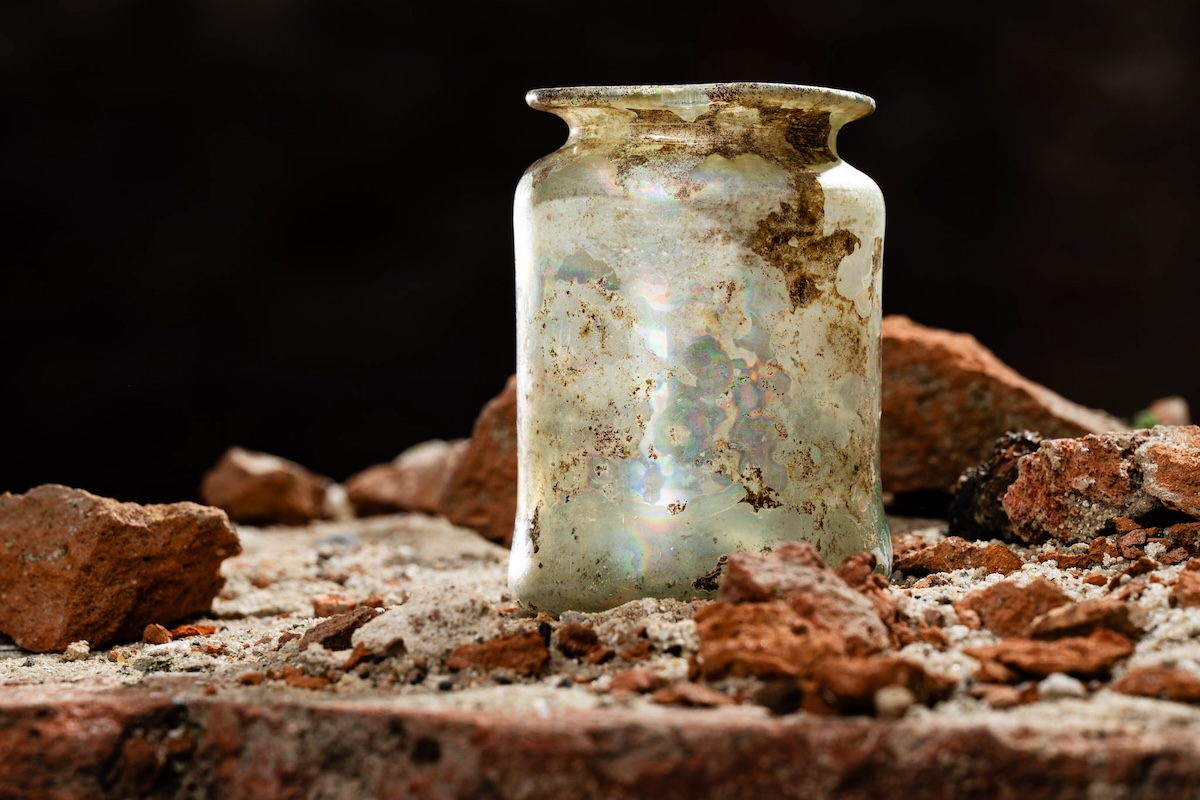Artefacts from the “Treasures of the Brühl Palace” exhibition
Varsovians and visitors to the capital are invited to see the exhibition “Treasures of the Brühl Palace” located in a glass pavilion in Piłsudski Square. The artefacts on display are among the nearly 10,000 objects that archaeologists discovered during excavations in the former courtyard and outbuildings of the Brühl Palace in 2023. Conducted on an area of more than 4,000 m², the excavations in the north-western corner of Piłsudski Square form one of the stages of the reconstruction of the Saski and Brühl Palaces and the three townhouses on Królewska Street.
Building material and decoration
Among the artefacts that archaeologists found at the excavation site were many elements that once made up the stunning Brühl Palace complex, as well as the surrounding buildings. The most prosaic artifacts that fall into this group are bricks. The exhibition presents various handmade and machine made examples. Their different signatures allow us to guess where each piece comes from.
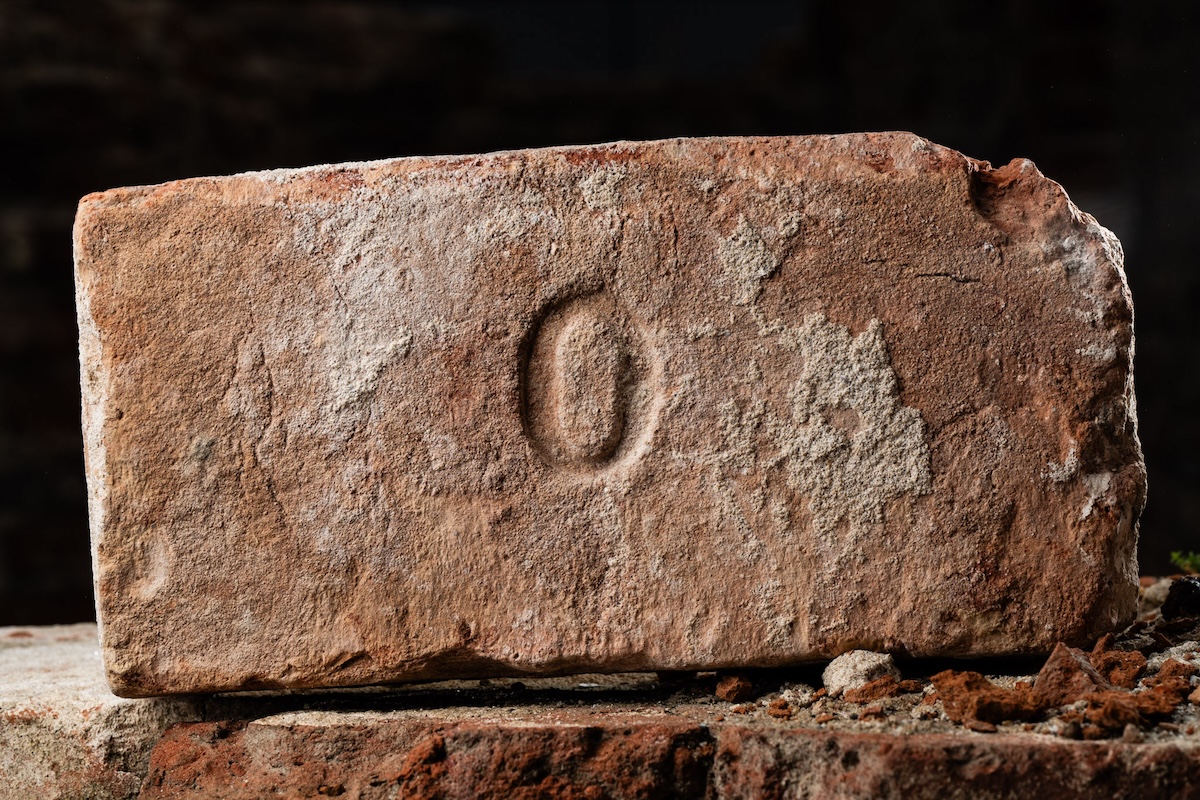
One of the larger objects on display is a fragment of a wrought-iron lattice or alloy balustrade, dating from the late 19th or early 20th century. It was found in the grounds of the Brühl Palace, but due to its age and the reconstruction of the palace carried out in the 1930s, it may also come from one of the neighbouring townhouses.
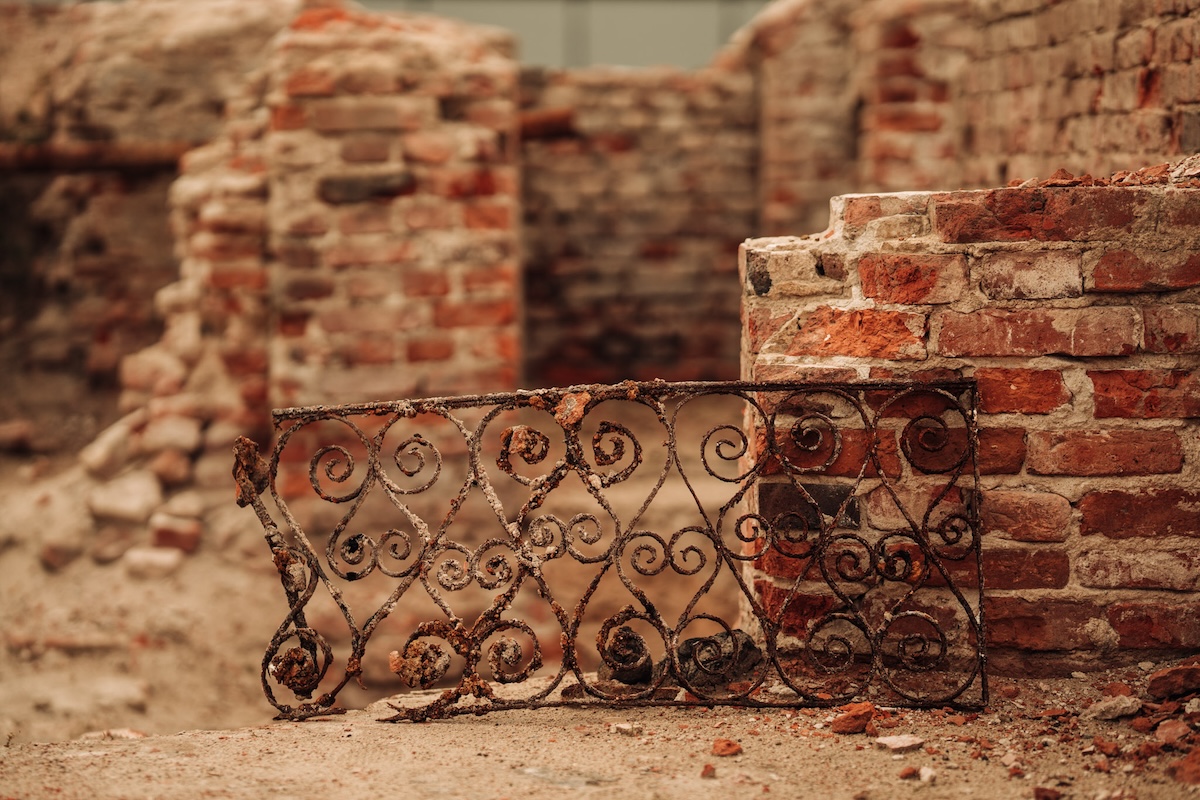
A sandstone slab with a preserved fragment of the inscription "RI.ET / XLVI" has even a more puzzling story behind it. Although it was found among the rubble of the Brühl Palace, its origin was initially unknown. Thanks to scientific research, it was determined that it was the missing fragment of the original plaque from the eastern façade of the Royal Castle in Warsaw, placed there to commemorate the extensive remodelling ordered by king Augustus III. The historic artefact was returned to its original location at the end of March 2025, after being shown at the "Treasures of the Brühl Palace" exhibition.
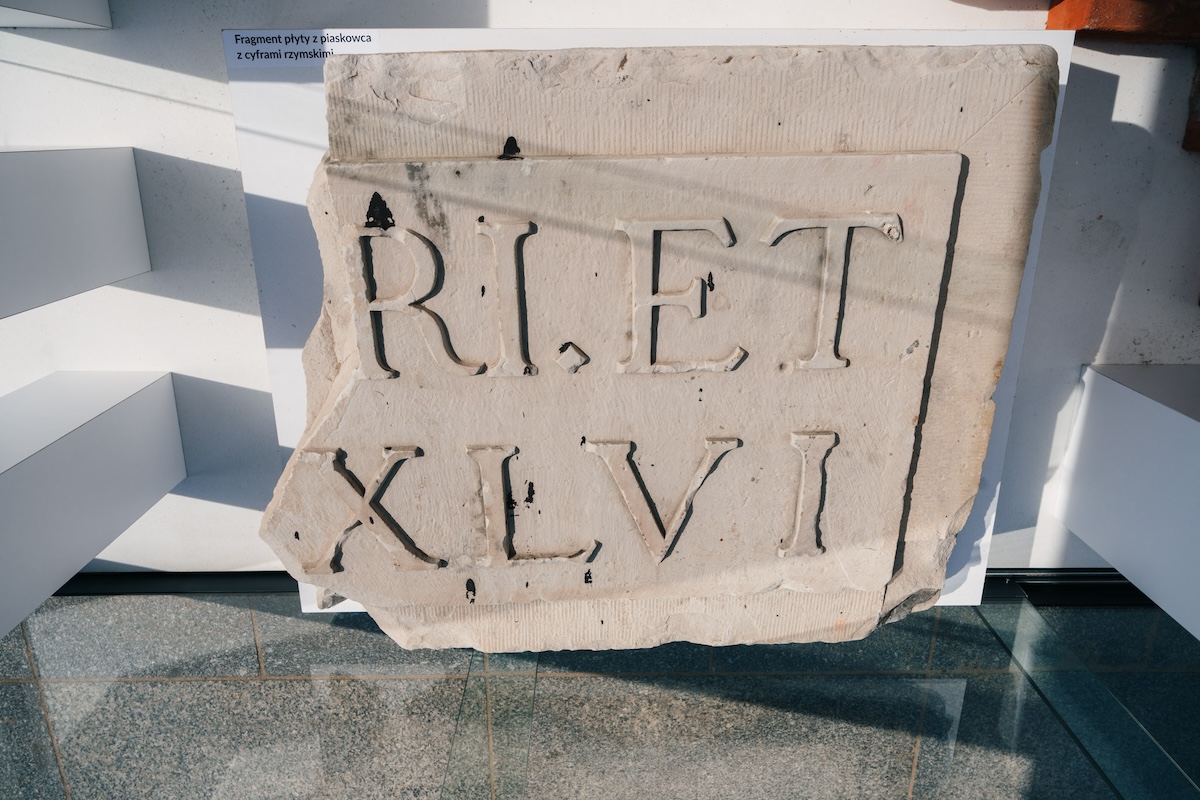
During their excavations, archaeologists often needed the support of large machinery capable of lifting and moving sizeable pieces of stone. This was the case, for example, with a half-preserved sculpture depicting a female figure standing on a platform with the inscription “Glory”. Its “twin”, or a later copy, can be seen nearby in the main avenue of the Saxon Garden. A comparison of the two sculptures will give an idea of what the missing upper part of the body looked like, and a keen observer will also notice slight differences in their shapes.
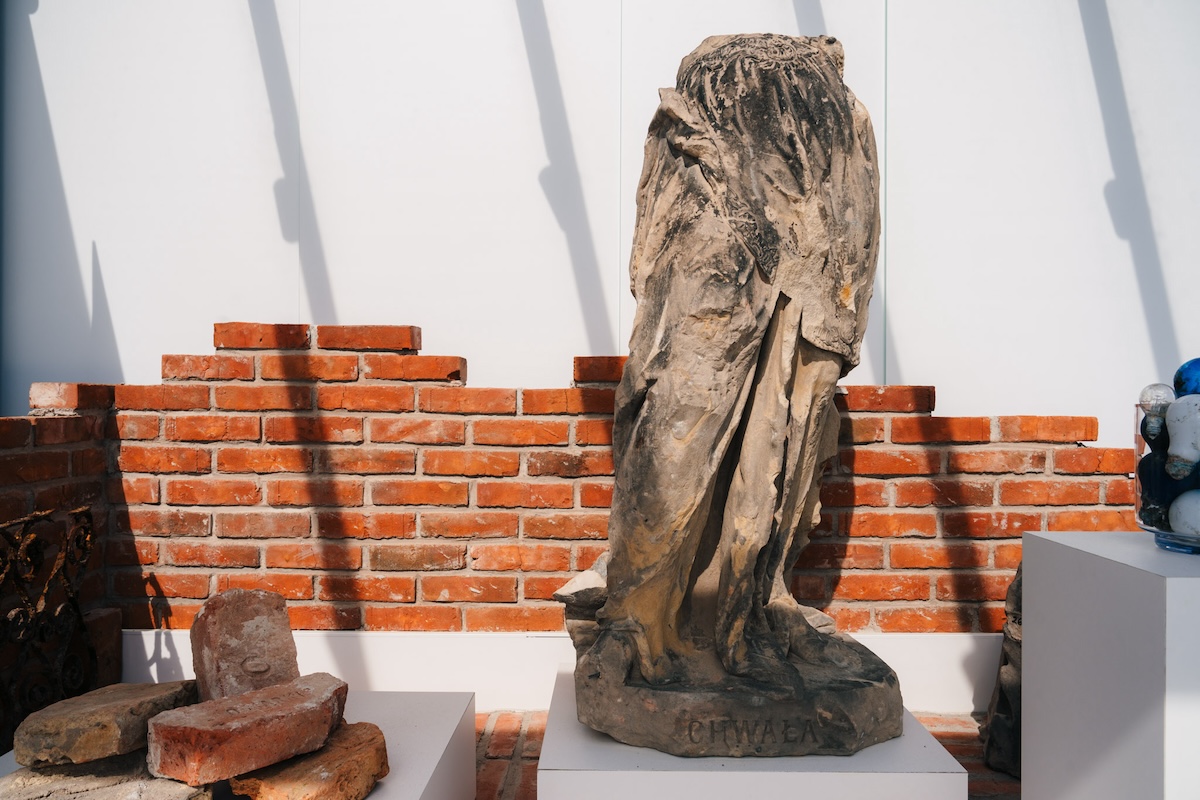
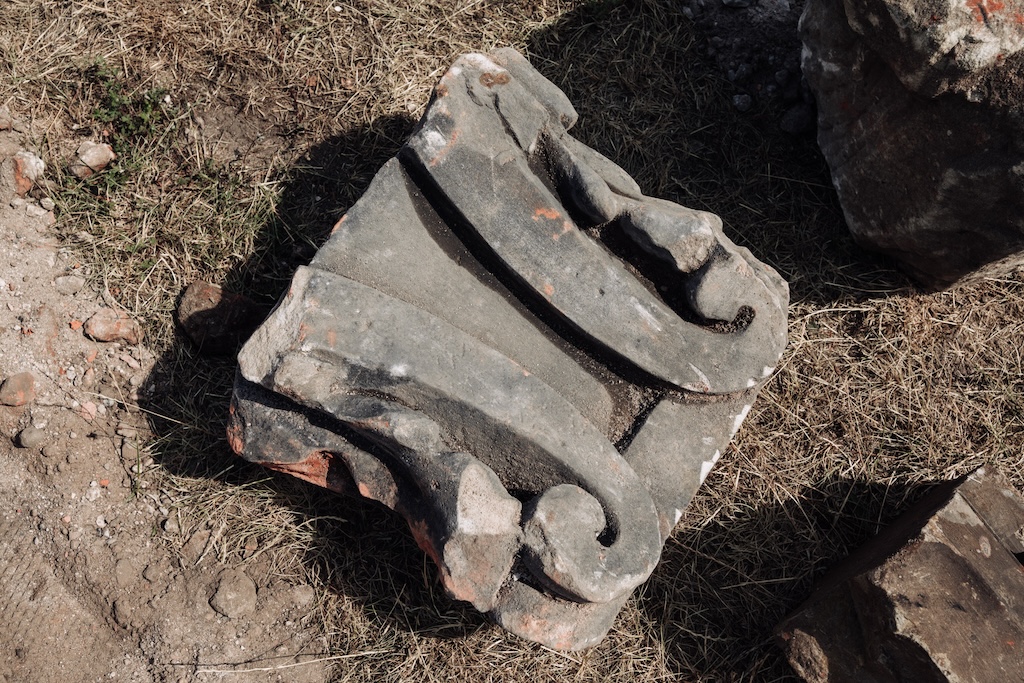
What was eaten at the Brühl Palace?
Another group of artefacts found on the Brühl Palace site is related to food and drink. One of the delicacies in Saxon times were oysters, which had to be fresh and came from the open sea and were served with pepper, drizzled with vinegar or lemon juice. Whole handfuls of shells from these molluscs were preserved in the cellar, which was used as a rubbish dump in the mid-18th century. In this period, oysters were a delicacy with which the wealthiest people made their fasting days more pleasant. You can find out more about the exquisite and often surprising cuisine of the period by watching one of the episodes of the “Phenomenon” series.
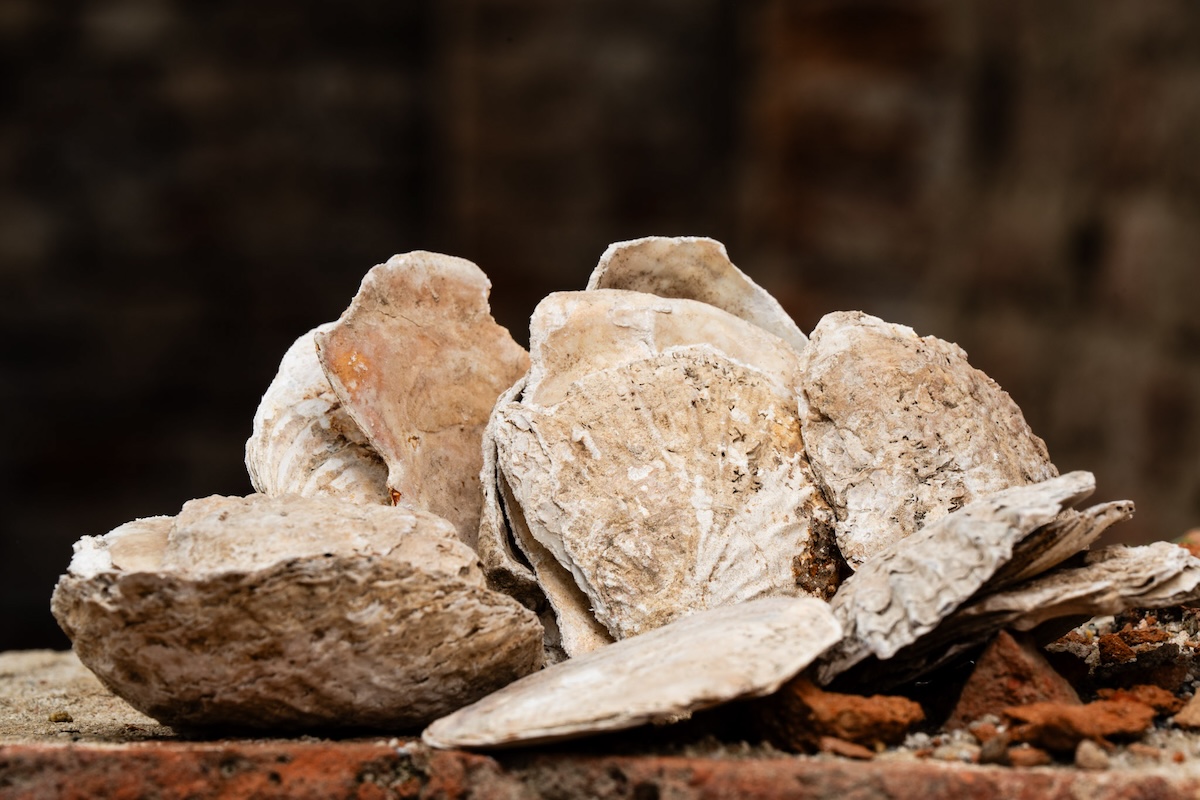
What was used to serve the food was also important. Although it is historically reported that Augustus II was particularly fond of Chinese and Japanese porcelain, the fragments of three cobalt-painted Chinese porcelain plates found in the grounds of the Brühl Palace may have had a different owner, as they probably date from the mid-18th century. Undoubtedly, the copper alloy fork presented at the exhibition comes from a different set. Archaeologists date its origin to the first half of the 20th century, so there is a chance that it was used by employees of the Telegraph Office or even the Polish Ministry of Foreign Affairs, both of which operated in the Brühl Palace at the time.
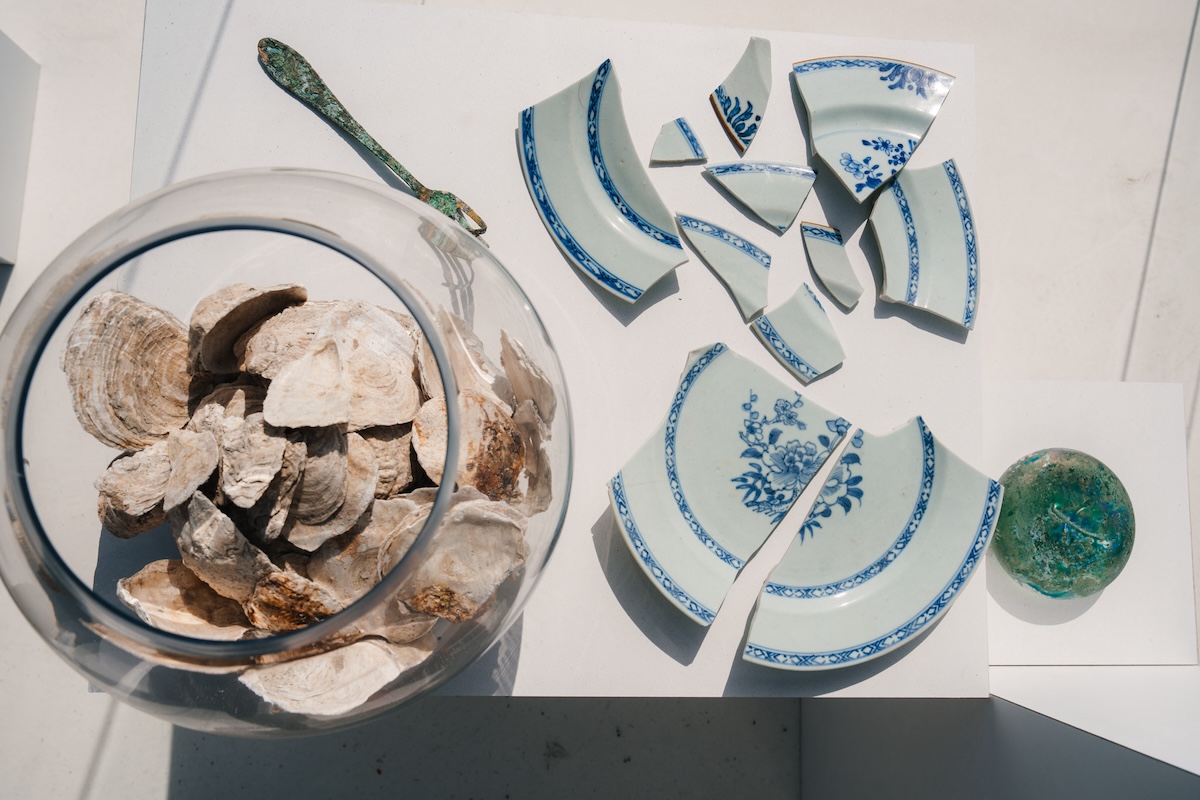
In the mid-18th century, seltzer water, which was imported, as the name suggests, from the German town of Selters (the Taunus Mountain region) in stoneware bottles, became popular in Warsaw. Fragments of stoneware vessels with the seltzer water branding, dating to around 1750, were found during archaeological research at the Brühl Palace. Seltzer water could be later purchased from the nearby Mineral Water Institute, founded in 1847 and located in the Saxon Garden.
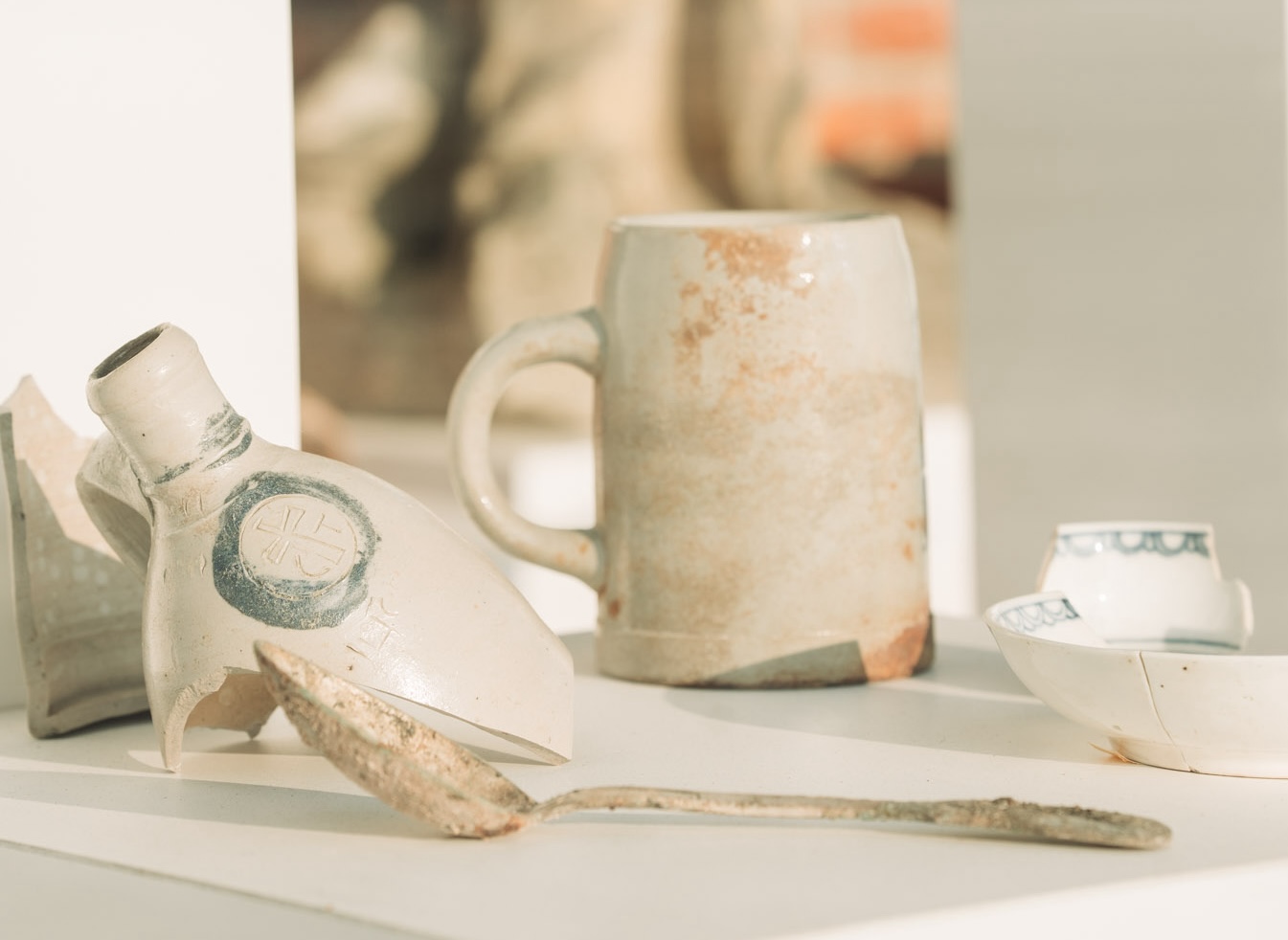
Thanks to archaeological works carried out in the Brühl Palace, it was possible to uncover the remains of a relatively well-preserved bathroom with white tiles on the walls and floor, fragments of a washbasin and an intact urinal by John Slater (Stoke) Ltd. On one of the windowsills, as if it had just been set aside, was a 20th century stoneware mug with the signature “HB”, indicating its origin from the Hofbräu brewery (Munich).
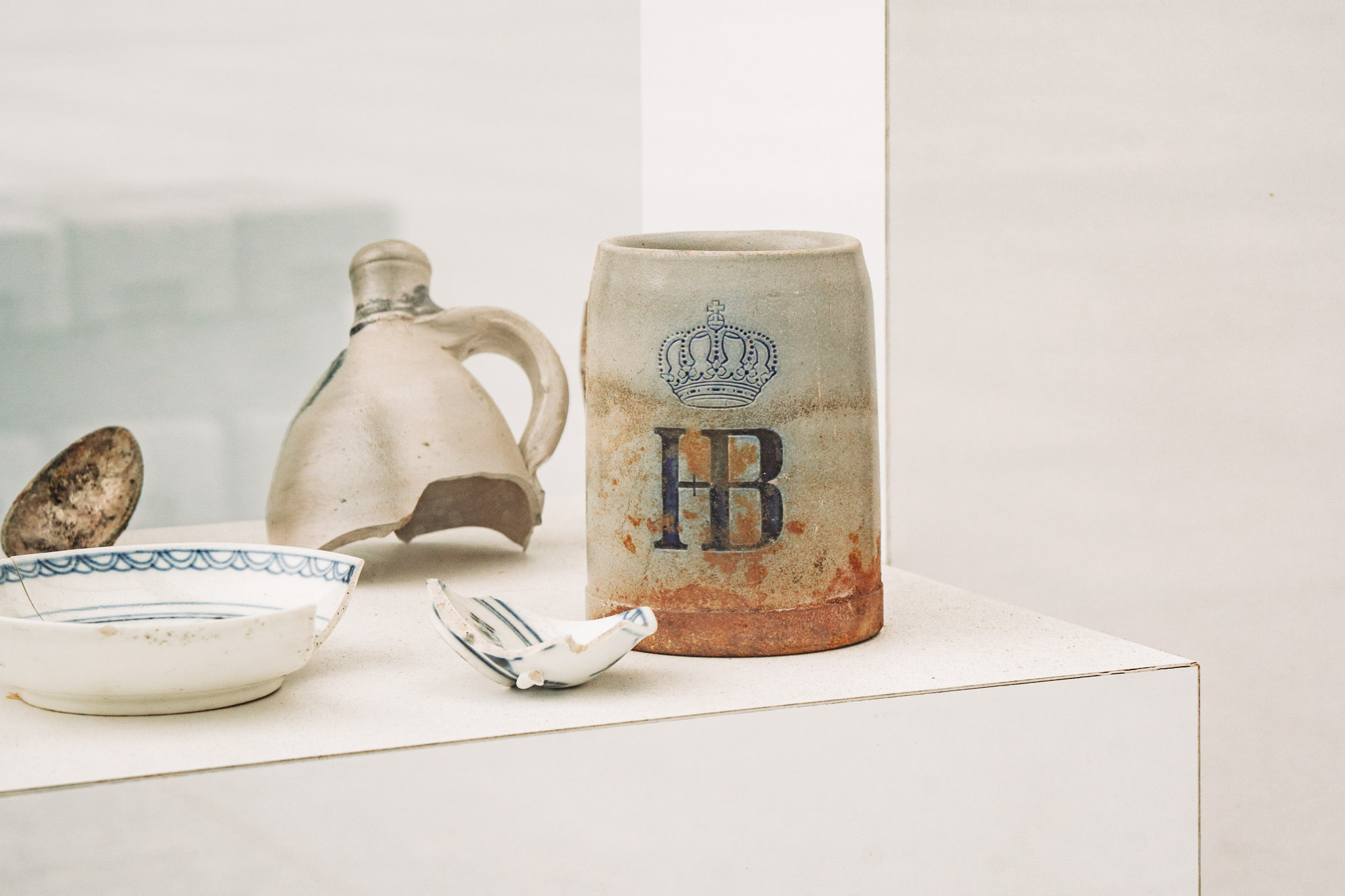
The last of the kitchen-related artefacts in the exhibition are 18th-century cylindrical glass bottles and a ceramic pot with an ear.
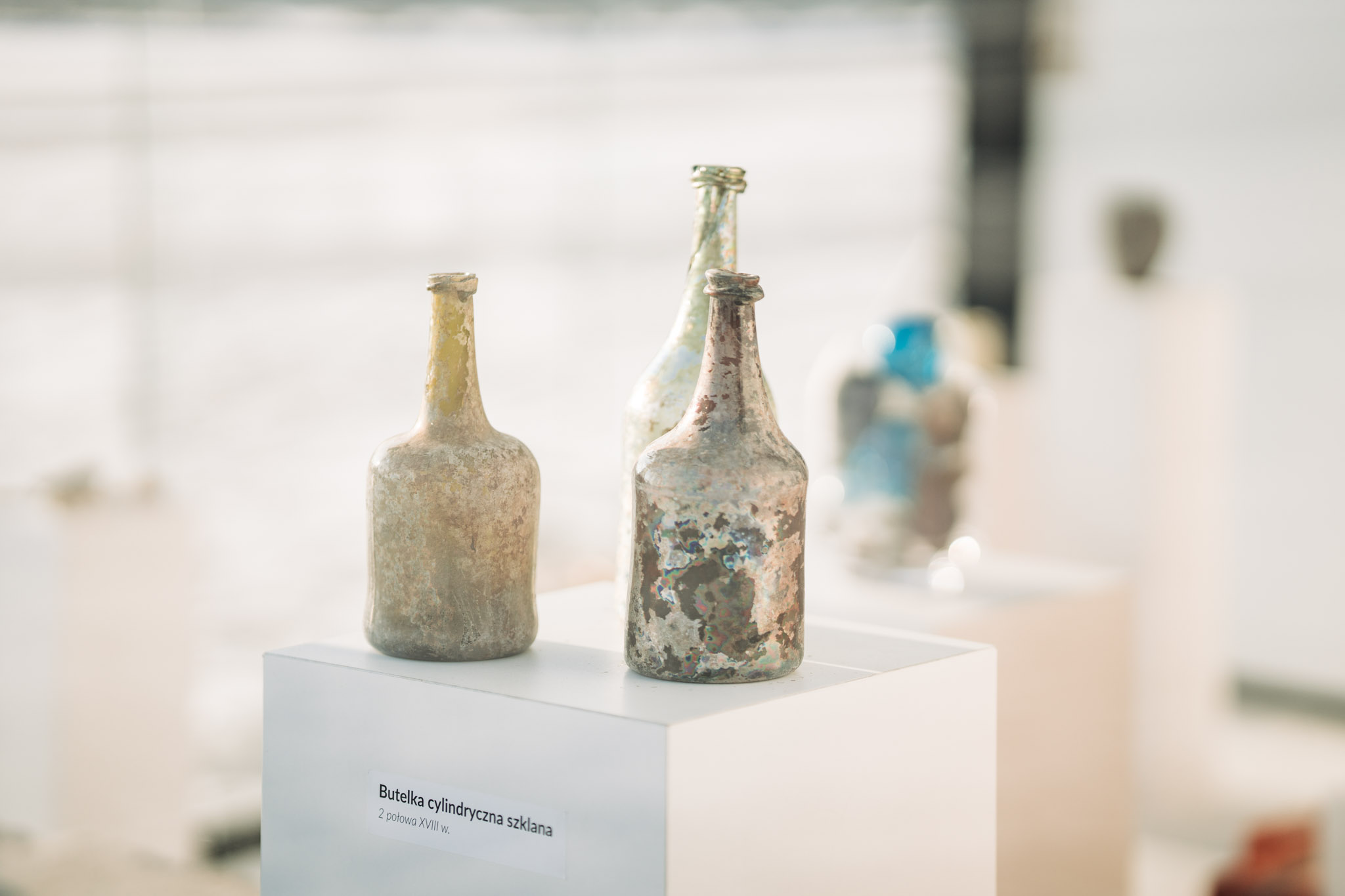
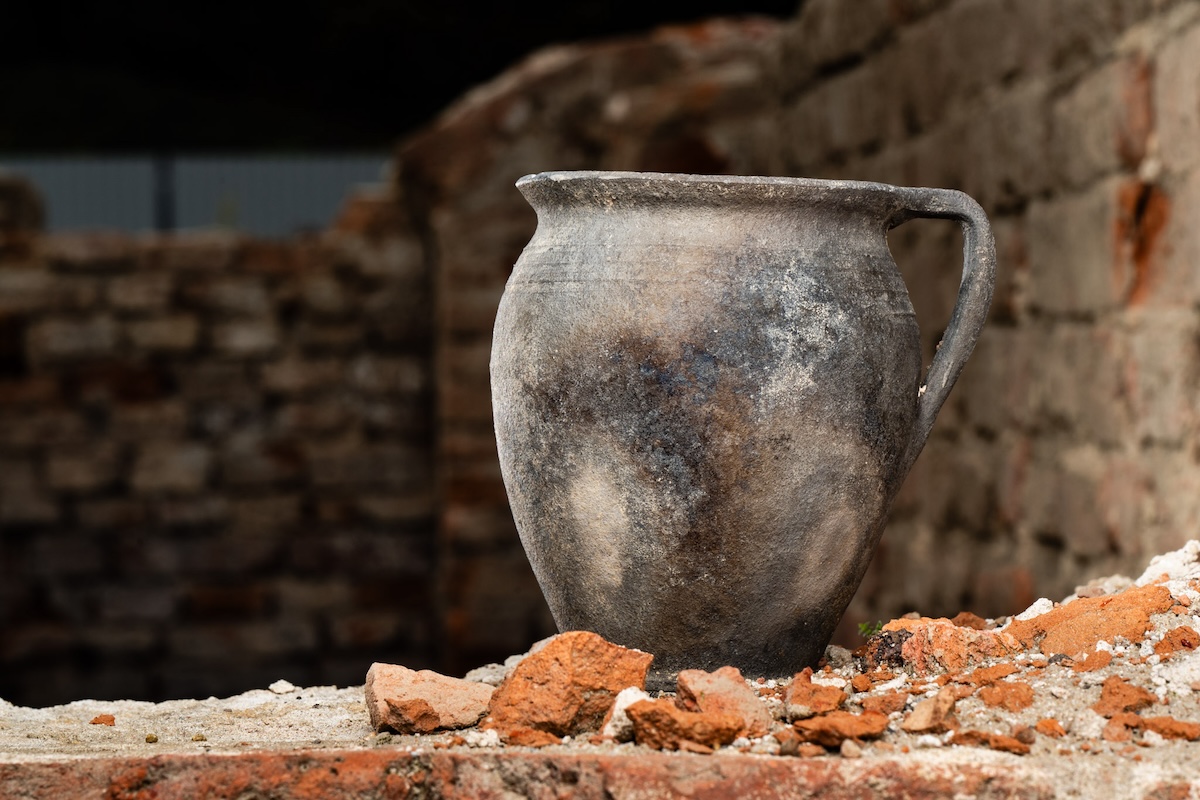
Everyday objects in the Brühl Palace
This artefact posed the greatest mystery to archaeologists, who had to carry out thorough research before guessing its purpose. The glass object turned out to be a smoother from the 18th century, used for ironing linen fabrics and shining wool. After finding foreign sources describing similar objects that were used for ironing and reached even the hardest-to-reach folds of fabric, the scientists tested the performance of this ancestor of an iron on a piece of linen.
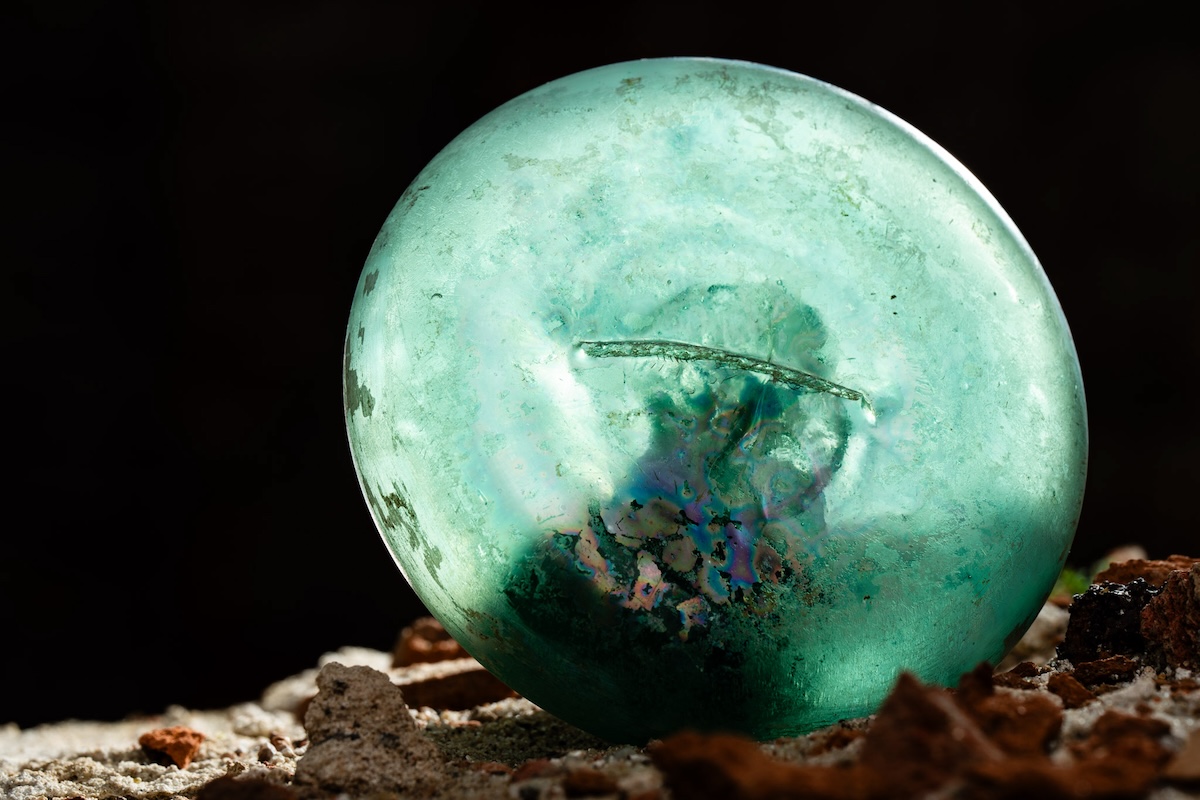
Let us look at another artifact. This is a fragment of a ceramic pipe head from the second half of the 18th century. Similar finds were made during archaeological research conducted in the Saski Palace in 2006 and 2008. Joanna Borowska, a participant in that research, mentions in her book titled “The Unusual History of the Saski Palace” that in the 19th century, pipes were made in Poland to imitate Turkish pipes (lulki), so they were called, like the inhabitants of the city on the Bosphorus, Istanbul pipes.
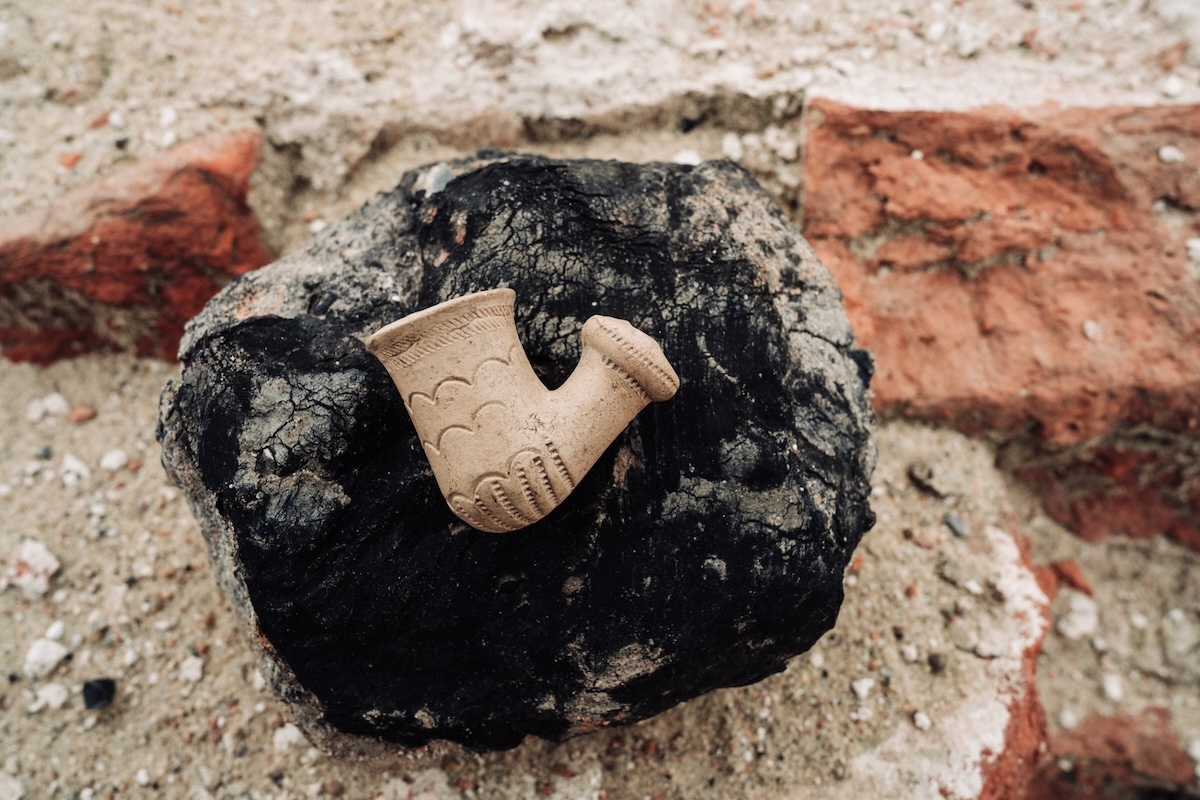
There is also another find which, like the pipes, was an item used mostly by men. We are talking about the decorative handle of a walking stick, which took the shape of a dog’s head. Made of plastic, the cladding dates from the pre-war period (1st half of the 20th century).
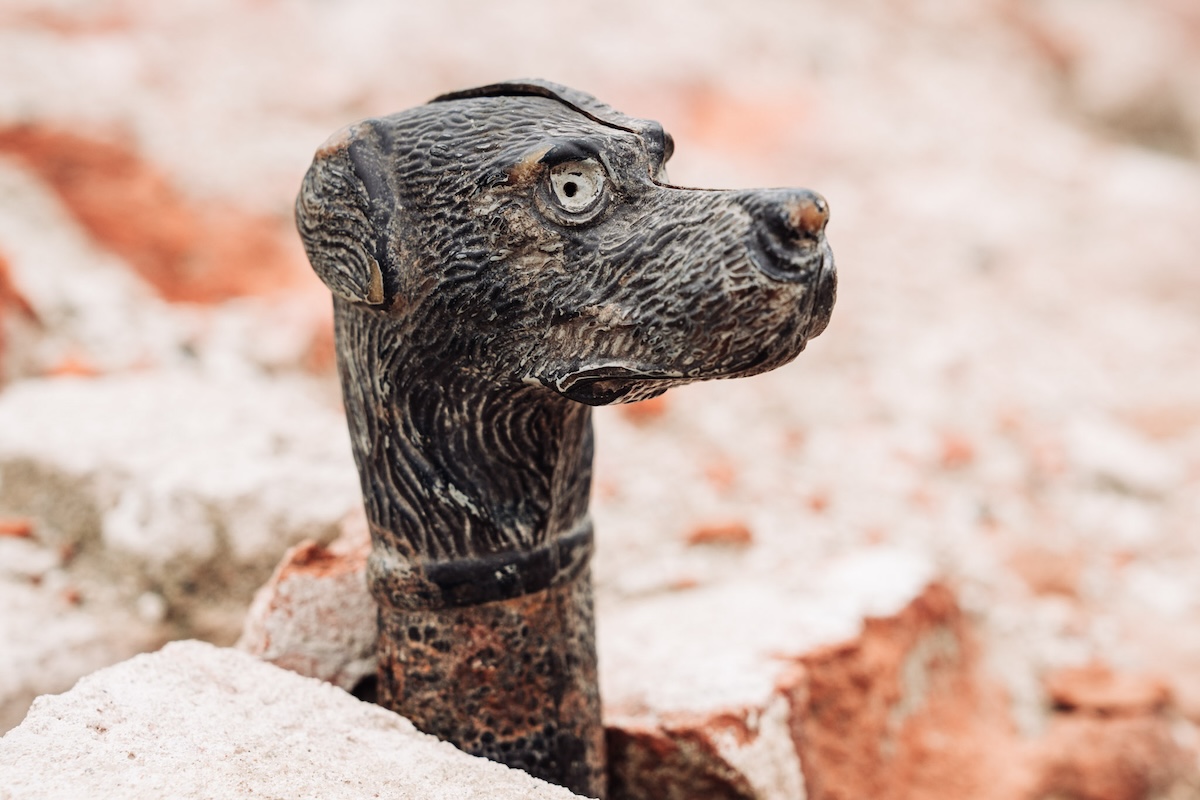
Another everyday item comes from the period of German occupation, when Ludwik Fisher lived in the Brühl Palace, which, like the mug from the Hofbräu brewery, was found in the unearthed bathroom. It is a ceramic jar with the ominous emblem of Ordnungspolizei - a police force of the Third Reich. The vessel was probably used to store a substance used for skincare, such as vaseline.
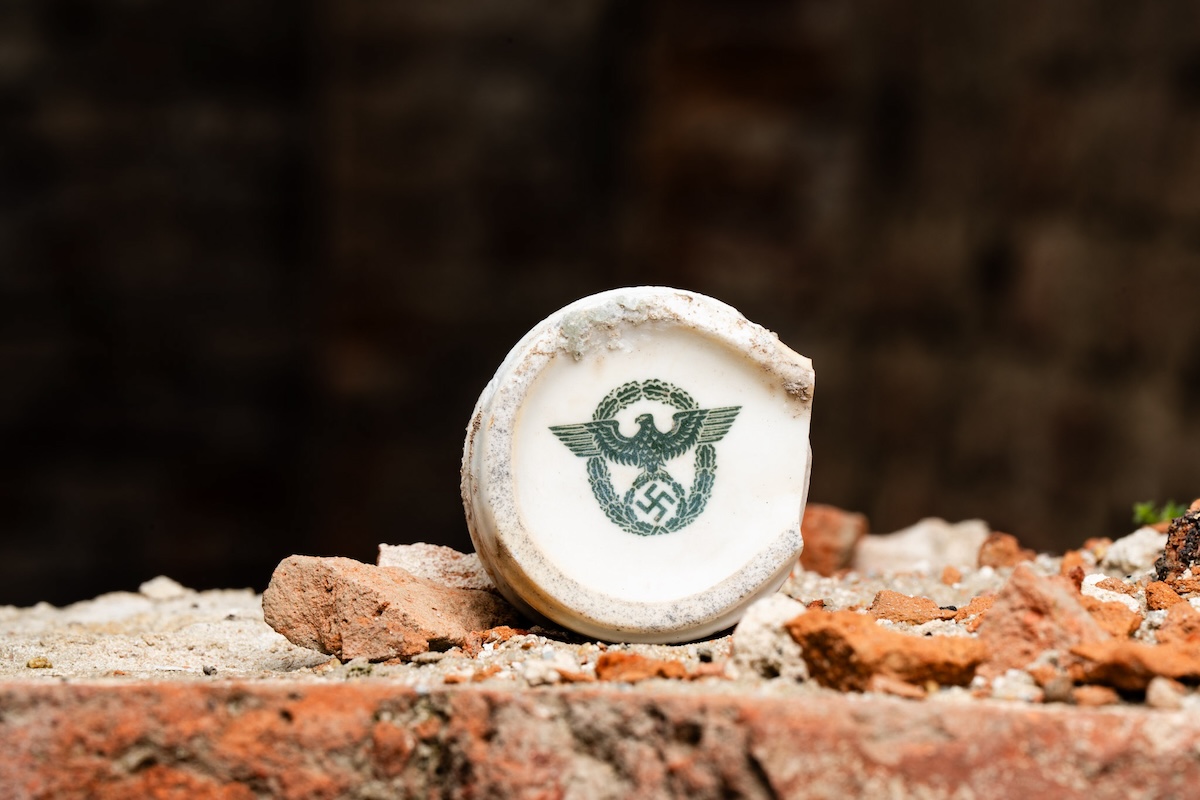
Time for an old technological innovation: the “Echo D1” detector radio. The device, commonly known as the “Apple”, dates back to the 1930s and may have witnessed the work of officials of the Polish Ministry of Foreign Affairs. The model was developed by the state-owned Tele- and Radio-Technic Plant Dzwonkowa (PZT), which was established in the early 1930s as a result of a merger of two other companies. Dzwonkowa was located at 30 (now 341) Grochowska Street. The Warsaw radio station was reportedly received within a radius of up to 200 kilometres!
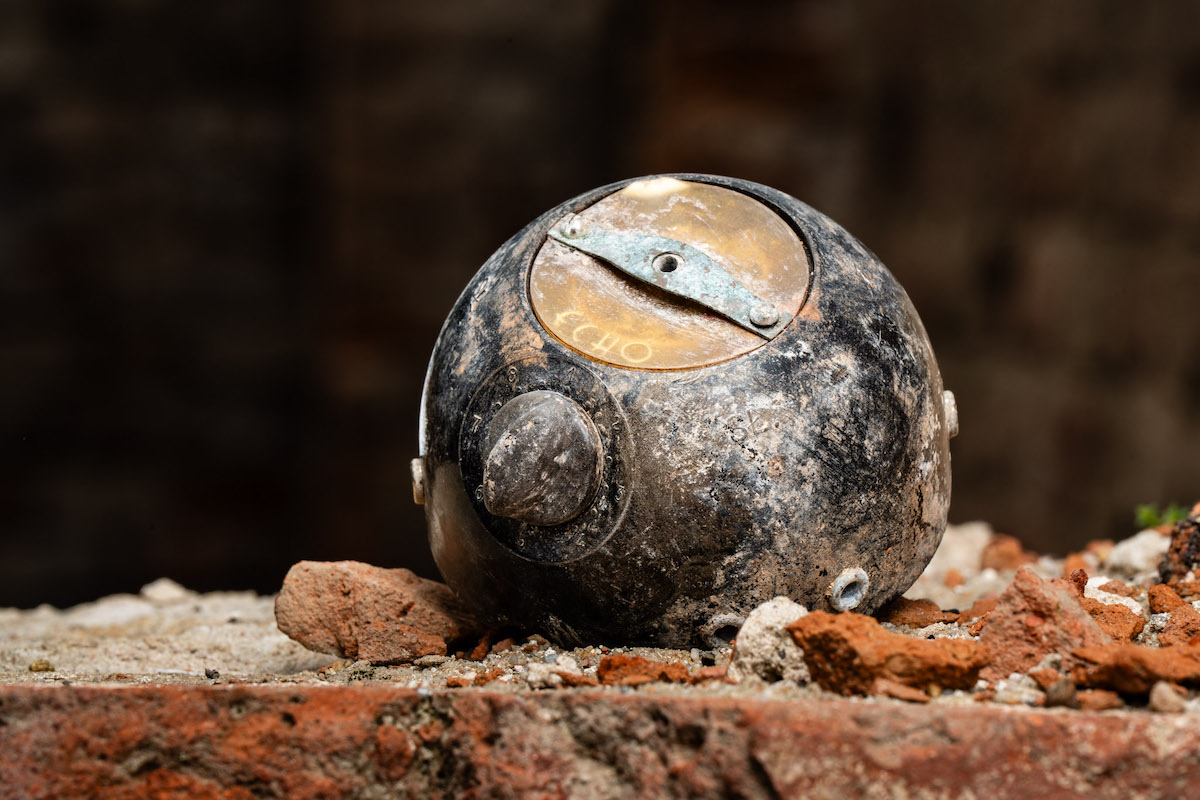
The purpose of the last item pictured, which was used on a daily basis, is familiar to all, as it is a light bulb. The blue colour of this OSRAM product is eye-catching, and the fact that it survived the war without shattering deserves praise for its quality workmanship. One of the light bulbs found during archaeological investigations at the Saski Palace site in 2006 and 2008 bore the inscription “ADM. HEADQUARTERS BUILDINGS”.

Other artefacts from the Brühl Palace
One of the most unexpected and at the same time very well-preserved finds was a kiddush cup dating from the first half of the 20th century, which is decorated with geometric and floral motifs. Blessings were said over such a vessel filled with wine, which was part of the ceremony performed on Shabbat and other Jewish holidays. Although excavations in the area of the Brühl Palace and its surroundings revealed a metal cup that was probably plated, kiddush glasses made of glass and silver were also produced at the time. Common ornamental motifs included lulavs, i.e. date palm branches. We can see similar decorations on a glass found in the area of the palace under reconstruction.
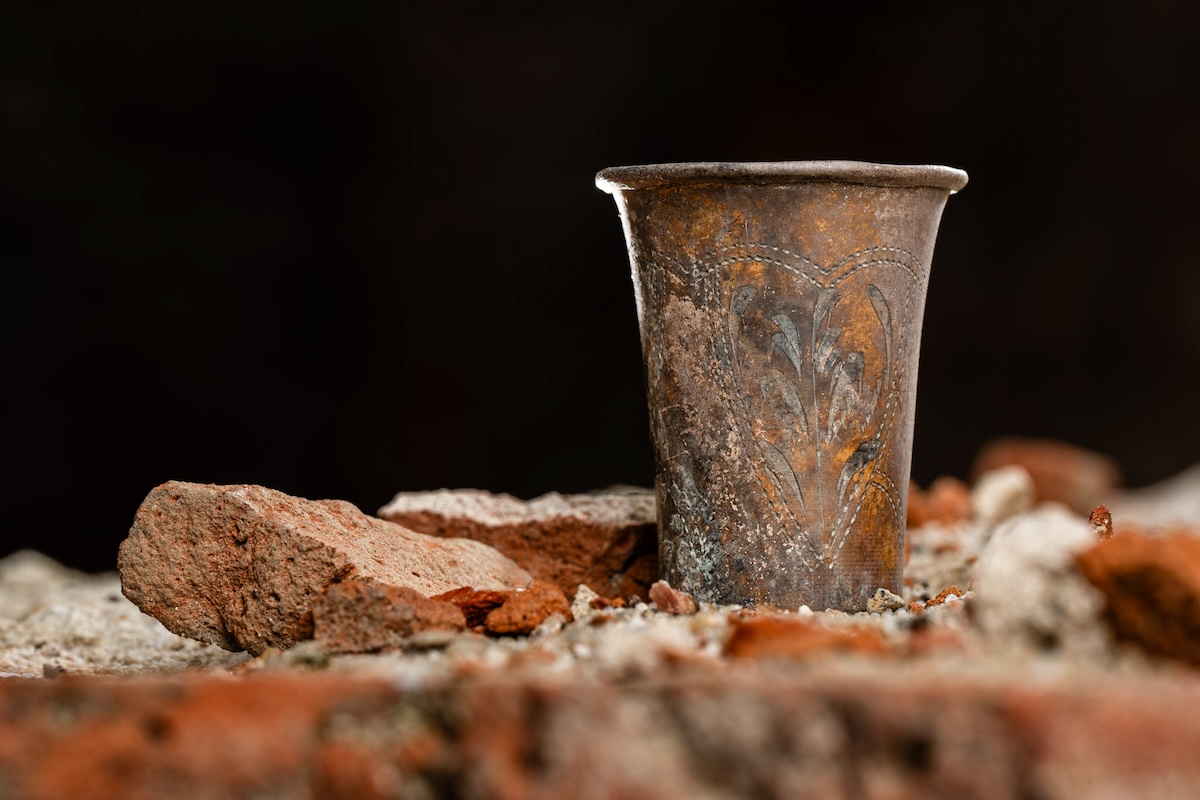
Here is one of the smaller artefacts that archaeologists found among the rubble: a fragment of a porcelain figurine that depicts a female figure and probably dates from the second half of the 18th century. Archaeologists affectionately called the partially preserved statuette a “shepherdess”, but its actual shape and original function will be known once the research is complete, as the ornamental-looking figurine could just as well have been part of a table service.

